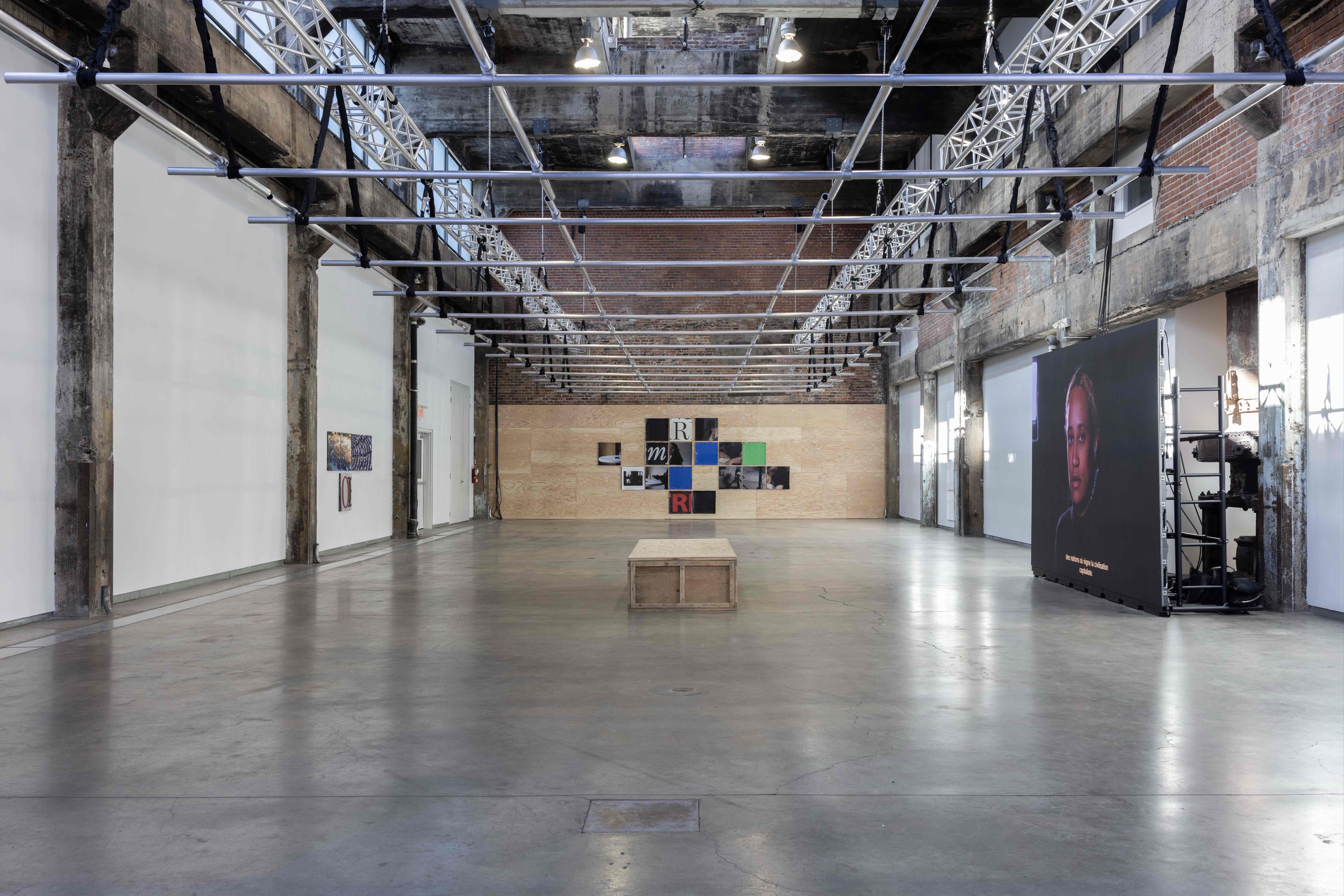
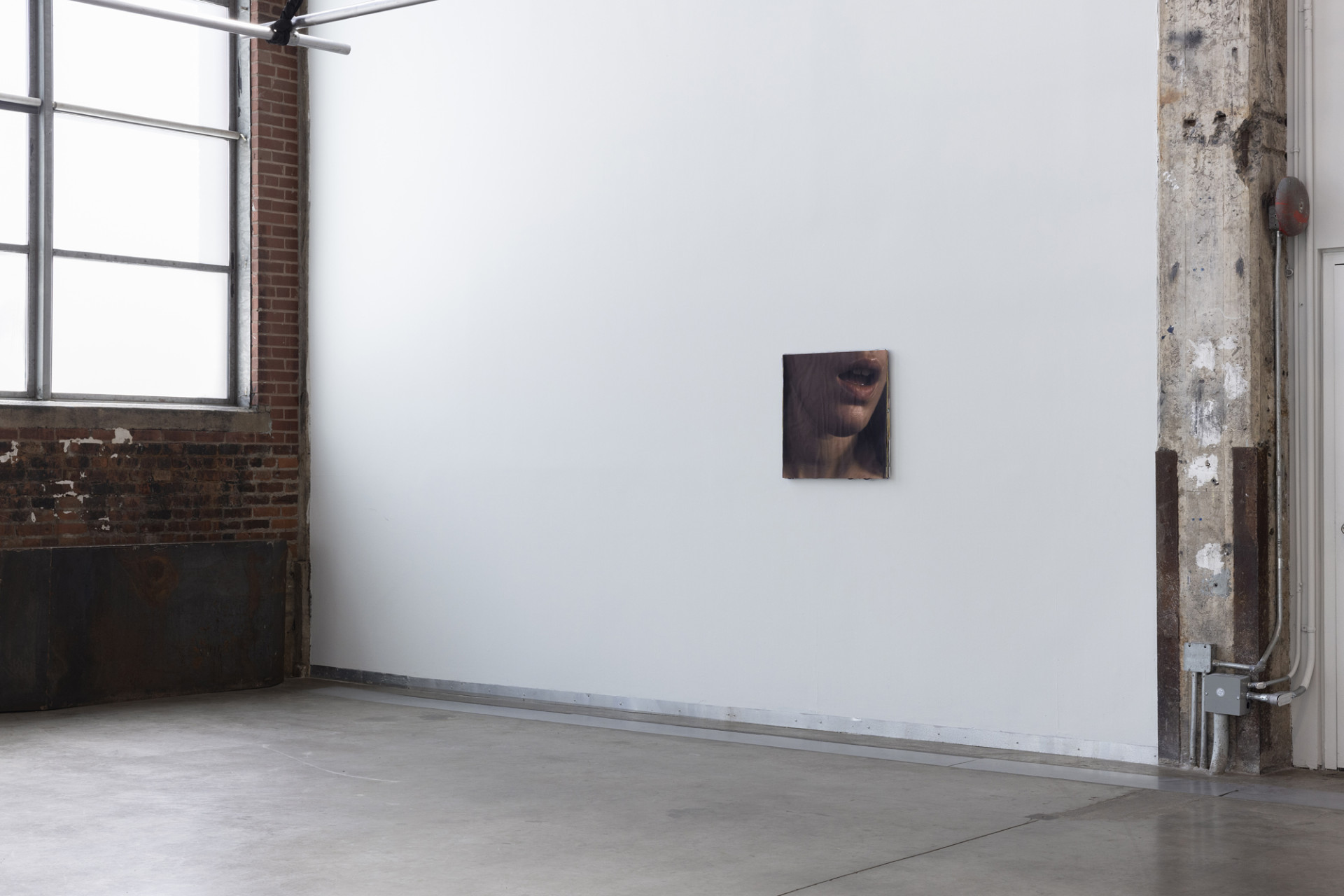
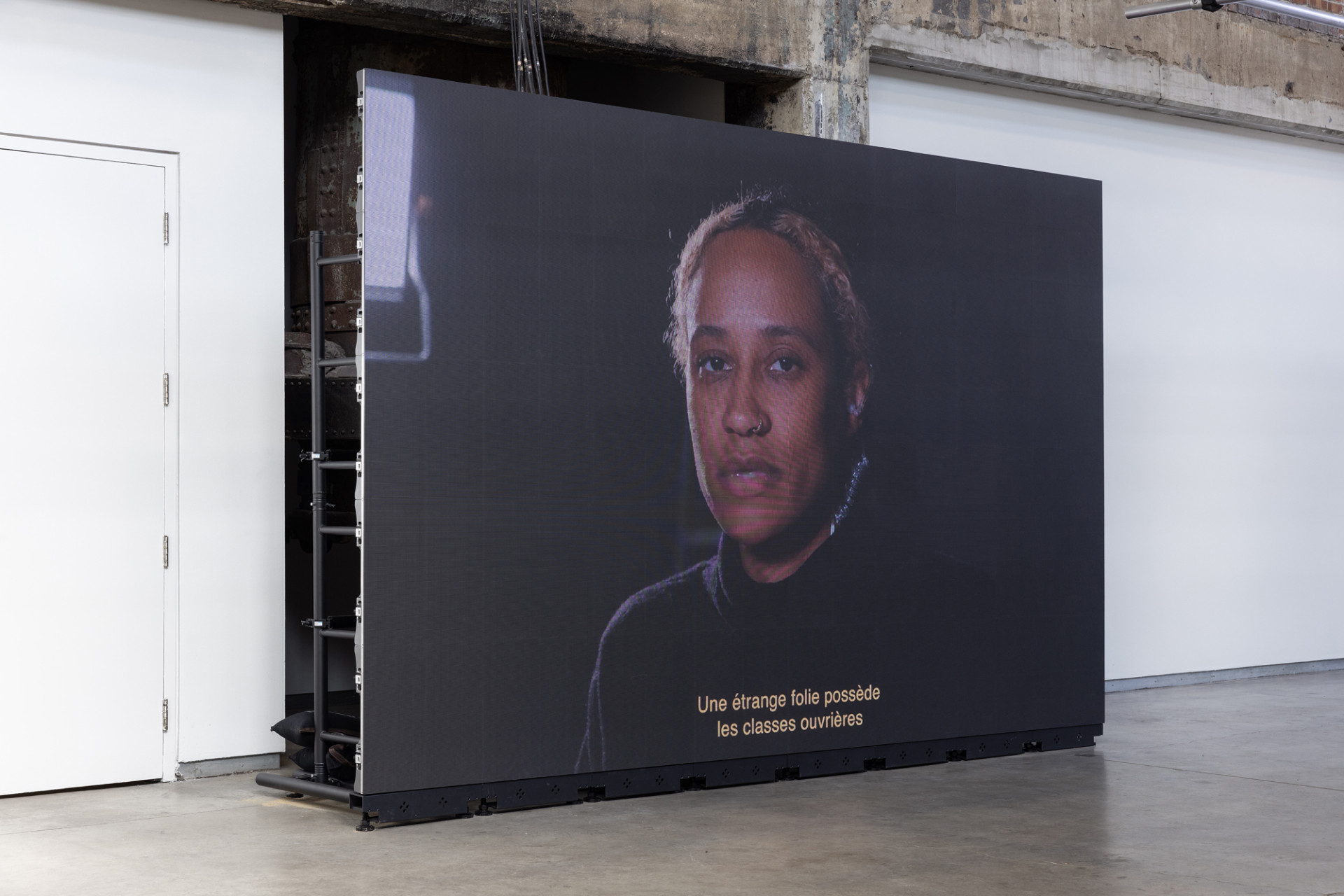

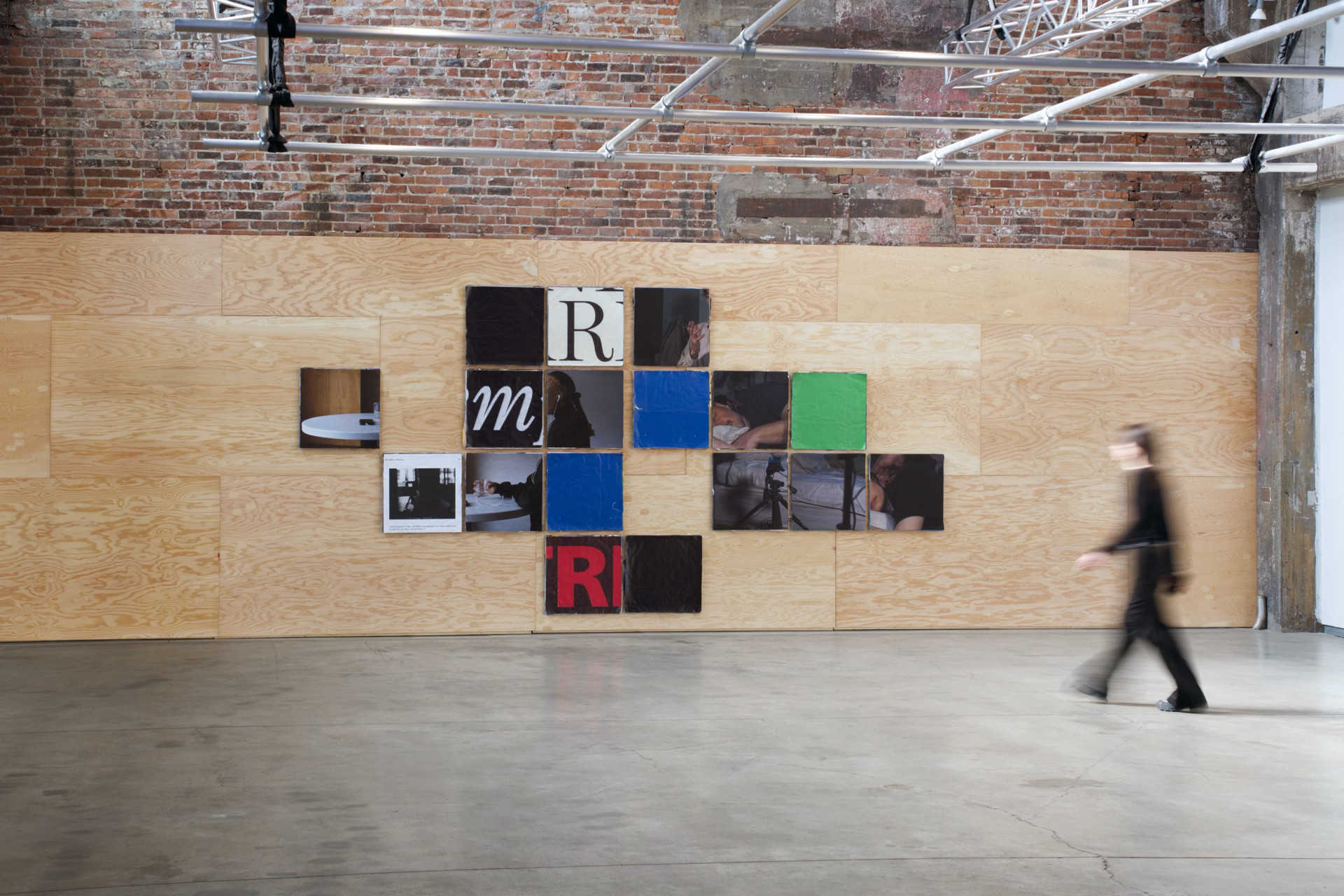
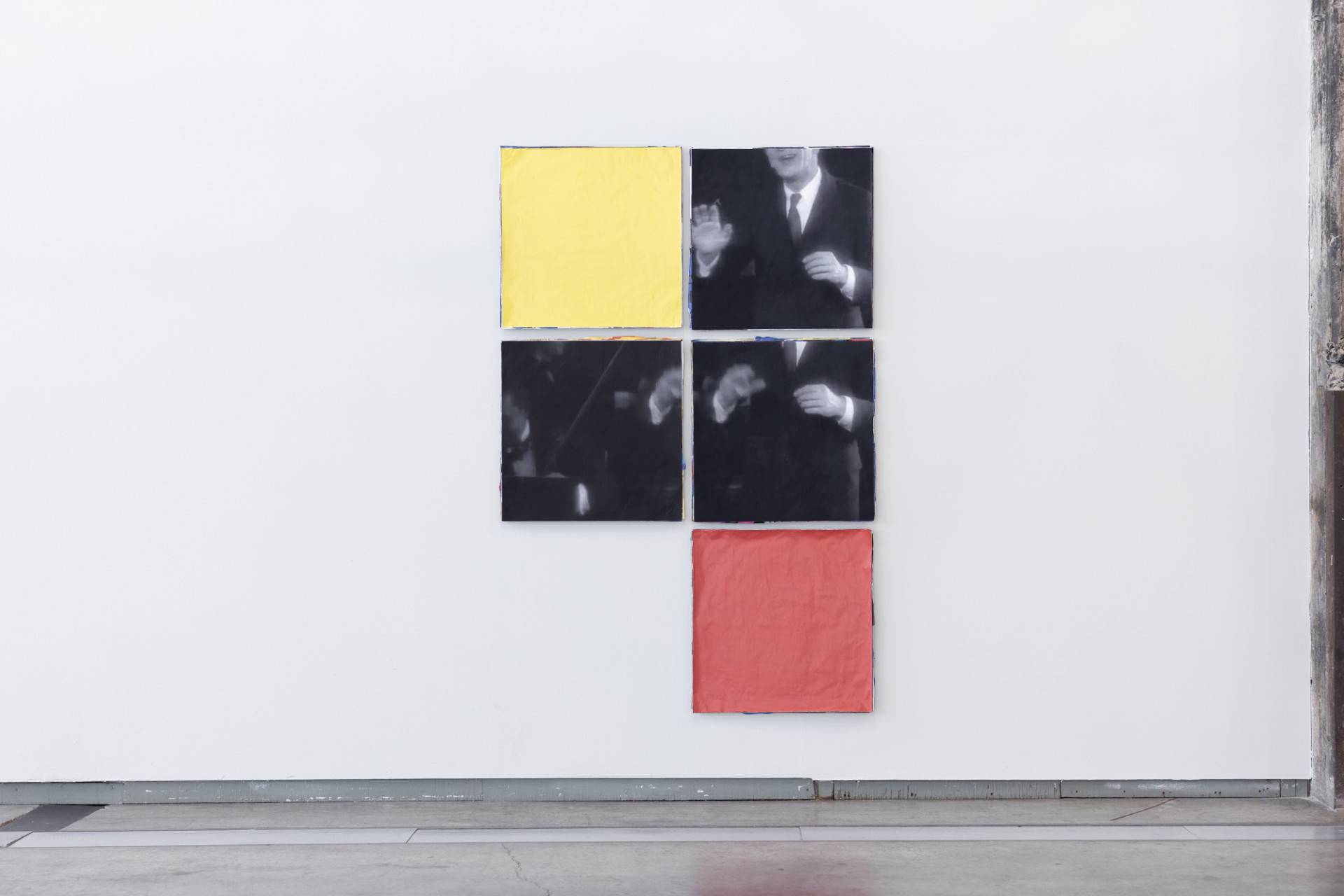

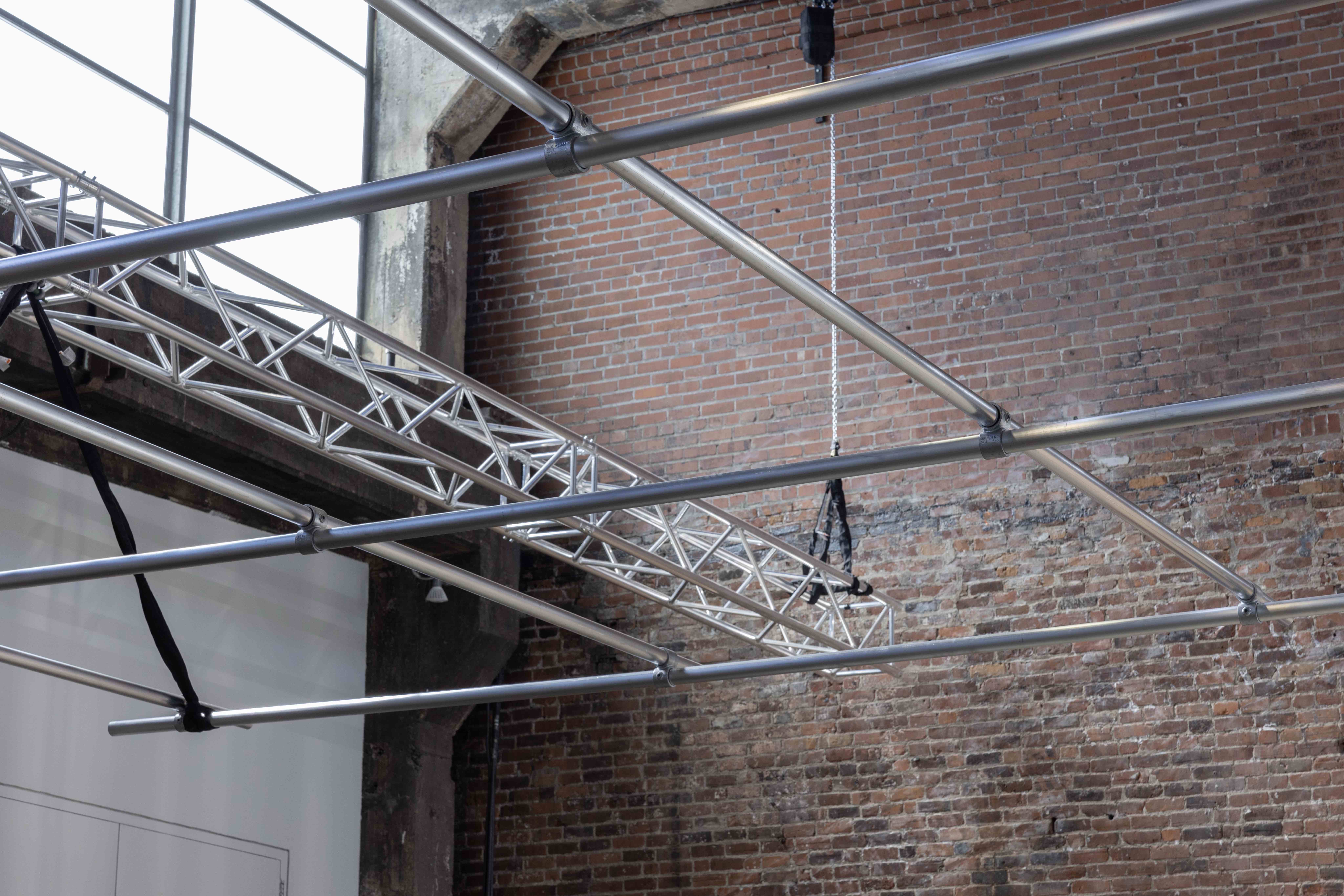
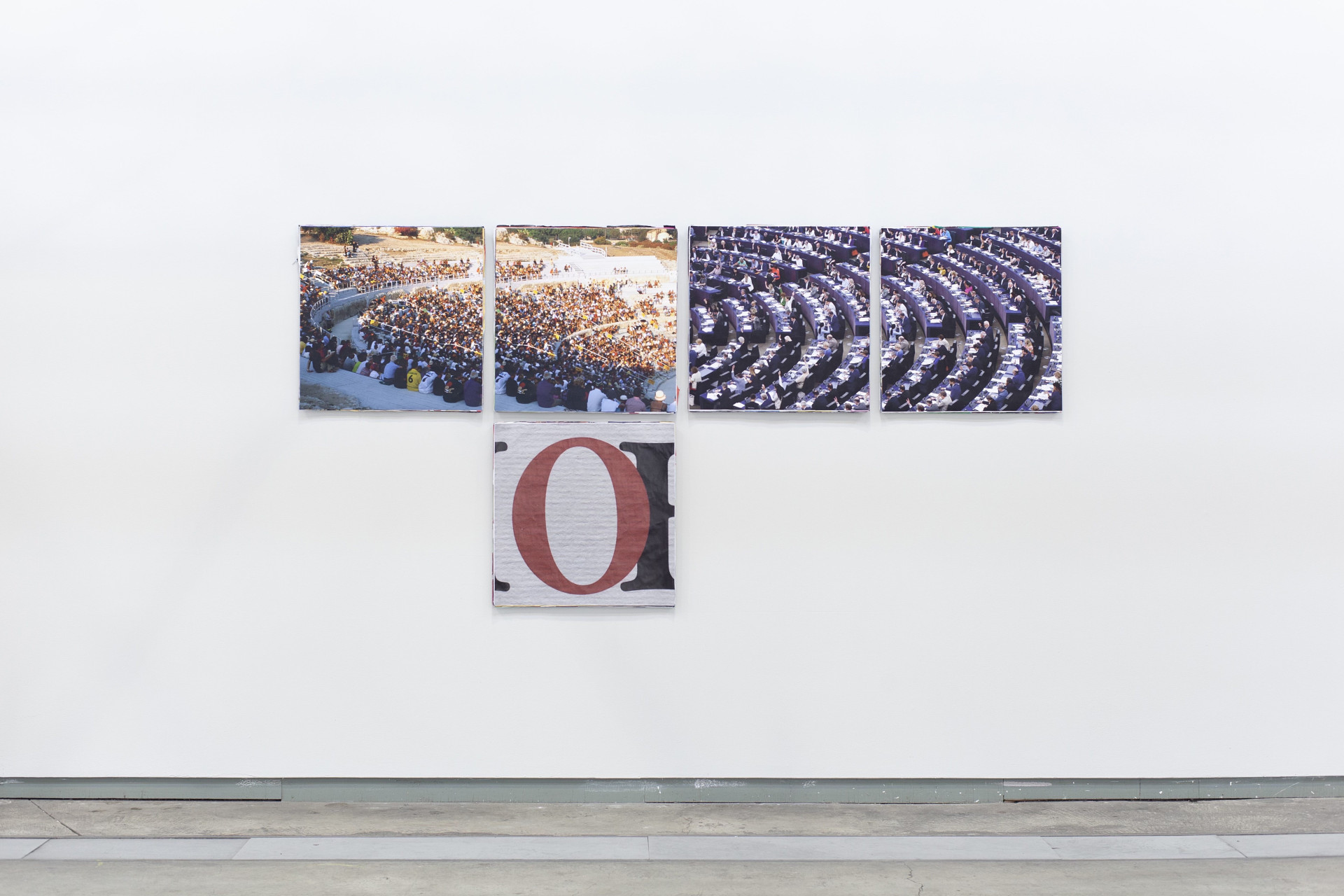
Ventriloquisms and Other Echoes
In the past five years, Simon S. Belleau’s art practice has consistently explored questions of language, interpretation, translation, and the transposition between text and image. Using a visual vocabulary that borrows codes from theatre and cinema, he strives to interest viewers in what might be on the other side of the decor, in the text concealed behind the image, in the words shaping what we see. All that usually happens behind the scenes - historical events and writings, film stills, props, and movie scripts are used, dissected, and reconstructed. In a world disrupted by the impact of artificial intelligence, in which we see an increasing delocalization of the source of image and voice, Simon S. Belleau encourages viewers to consider what value should be given to what is said if the voice no longer comes solely through the belly’s breath.
How do we approach a space that is so much beyond us and how do we make something visible when emptiness fills the space? This is the inevitable question that artists ask themselves when invited to show in the Main Hall of Fonderie Darling, a site known for its industrial monumentality. Simon S. Belleau has chosen to approach this quandary by literally dividing the hall in two and lowering the ceiling to just 10 feet—an unusual architectural intervention that aims to give the space a more human scale.1 Titled Tiramisu —which means “pull me up” in Italian—this almost counter-intuitive horizontal incision pushes against the site’s natural propensity to direct our gaze upward. A type of rigging, usually hidden and used for lighting equipment is here placed centre stage, in keeping with a strategy of reverse logic that recurs in the exhibition works.
Central to the proposition Répliques : scènes 1-4 reveals the dissonance between the world of image and that of sound, as well as the artificial nature of any production context. The title, chosen for its double meaning of the French word répliques (replicas and an actor’s lines in English) is deliberate, referring both to a copy of something and to the characters’ dialogue onstage or on-screen. The actors are directed by the director’s—i.e., the artist’s—voice, which becomes a kind of echo of what they will have to articulate. The lines whispered to the actors make it difficult for us to know who is saying what; shot in close-up, the mouths act as prostheses of a language whose original source is inaccessible to us. During the exhibition, scenes will be added to the video over time, similarly to a montage in progress. The first scene starts with a telling of Simon S. Belleau’s dream, transcribed and scripted, then told in such a way that the words pronounced by the actor lead to a remake of “Everything Is Free,” a cult song by country singer Gillian Welch. Written in 2001, in reaction to the emergence of music piracy and the non-regulation of streaming platforms, it seems to prelude current issues regarding threats to intellectual property and recognition of artistic work. As shown by the recent mobilization in Hollywood against the use of artificial intelligence to generate scripts or characters, artists are at the centre of an ongoing debate about the freedom of using technology, labour rights, and, more broadly, the fundamental nature of art.2
The act of copying and pasting information is key to the creation of a series of works on paper shown on the walls of the Main Hall. Although each square reveals only the top image, each section is in fact an accumulation of approximately twenty posters taken from various sources. Playing with ellipses and temporal shifts, the artist visually introduces the notion of the echo, the acoustic phenomenon of a sound reflecting against a surface and multiplying.3 We can see close-ups of photographed words, a photograph of the European Union parliamentary assembly voting on regulating artificial intelligence for the first time, or the image of an amphitheatre in the Greek-Roman style. The assemblage You ain’t heard nothing yet shows the cropped portrait of Al Jolson, the actor who pronounced the first sentence in talkies, in the mythical film The Jazz Singer (1927), in which silent film audiences first heard a voice synchronized with the image on-screen. By including the poster medium—a versatile and omnipresent media distribution tool—Belleau is interested in the entanglements of letters and faces, cinema and life, copy and original in order to emphasize the inherently repetitive nature of image, gesture, and language. Just like generative AI, which learns by observation and imitation—including of its own productions—the artist works with materials that are already in circulation.
The desire to deal equally with the work and the various steps that lead to its creation is reaffirmed in Production Schedule 2 - August 25, 2022, a work made from the visual plan of a shooting schedule, a key tool for organizing crews on film sets and sequencing a project from start to finish.4 Having erased all information related to specific dates and places, the artist transposes what belongs to cinematographic post-production chains in a language firmly rooted in visual art codes. Through its sequential form and clever references, the exhibition Répliques maintains the tension between the spectacle and the off-screen, between the automation of knowledge and the artist’s role in the cultural industry.
The idea that politics, theatre, and cinema take shape in our imagination based on the same mechanisms of representation is central to this exhibition, and a dialogue between the paralanguage of cinema and the real challenges of creation. Although very topical, these observations are also highly personal, related to a sensitive and cinematographic look at current entanglements between the communication spaces generated by humans and those produced by artificial intelligence as they increasingly navigate the same plane. Through this resolutely installational exhibition, it seems that the moment has come for Simon S. Belleau to reduce the gap between what happens behind the scenes and beyond the screen.
Milly Alexandra Dery
Translated by Oana Avasilichioaei
INTRODUCTORY VIDEO
[1] L’ayant documenté plusieurs fois pour d’autres artistes exposés alors qu’il poursuivait ses quatre années de résidence en Ateliers Montréalais, cette Grande salle, l’artiste la connaît bien.
[2] De juillet à novembre 2023, le Writers Guild of America (WAG) et le Screen Actors Guild (SAG) sont tombés en grève pour revendiquer des meilleures rémunérations et des garanties de contrôle pour l’usage de l’intelligence artificielle par les studios de production.
[3] Dans la mythologie grecque, écho est également une nymphe, condamnée par la déesse Héra à ne pouvoir que répéter les dernières paroles entendues.
[4] Au-delà d’un intérêt conceptuel, l’univers du tournage et de la post-production est bien connu par l’artiste qui a travaillé de nombreuses années comme peintre scénique en théâtre et cinéma.
This project is made possible thanks to our partners’ support :
